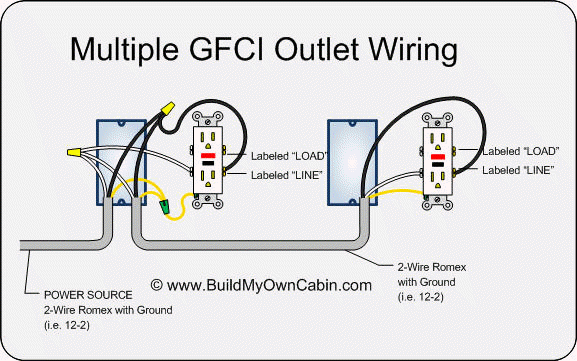Jayzuss. In a single-family home? I have 28 in a large house with a secondary panel in the garage.
a common sized modern breaker panel will have 40 positions and most can be filled. if you balance and isolate loads it can come to lots of circuits.
I assume you’re not counting the ground (usually a bare wire), because with that there would be three. A GFI with only two wires attached can’t possibly work!
Here’s how they’re wired:
BTW, the GFI might not be faulty. You might have a partial ground. The easiest way to tell is to replace the GFI, and if the new one fails, call an electrician.
When replacing the outlet, you can disconnect the mains, or you can use an assistant. Turn off a breaker (or a sub panel) and ask the assistant to push reset and see if the light comes on.
Speed up the process by turning off a bunch at a time, starting with ones that aren’t important to keep on (refrigerator, etc.). This is an approximation of what computer geeks call a “binary search”. If you have 64 breakers and use a binary search, you will find the right one in 6 tests.
Actually, it will work just fine. A GFI has two current transformers inside which measure the current through the hot and the neutral. It then uses some solid state circuitry to measure the difference, and if the difference is big enough, the GFI trips. The protective ground doesn’t come into play in it at all.
It does seem kinda funny that a ground fault interrupter doesn’t have to actually be connected to ground to work, but the assumption is that if the hot and neutral currents don’t match, then the current has found some other path (i.e. through you and then through earth ground) and the GFI trips.
As far as I know, they usually only have one current transformer that both hot and neutral pass through. If the measured current is not close to 0, the GFCI trips.
